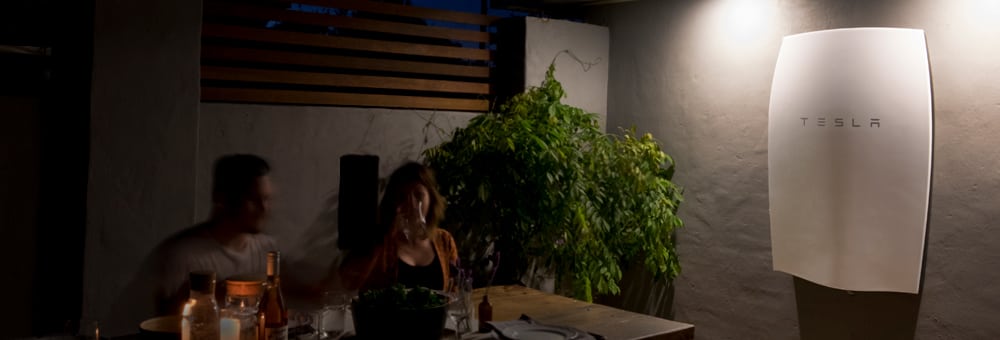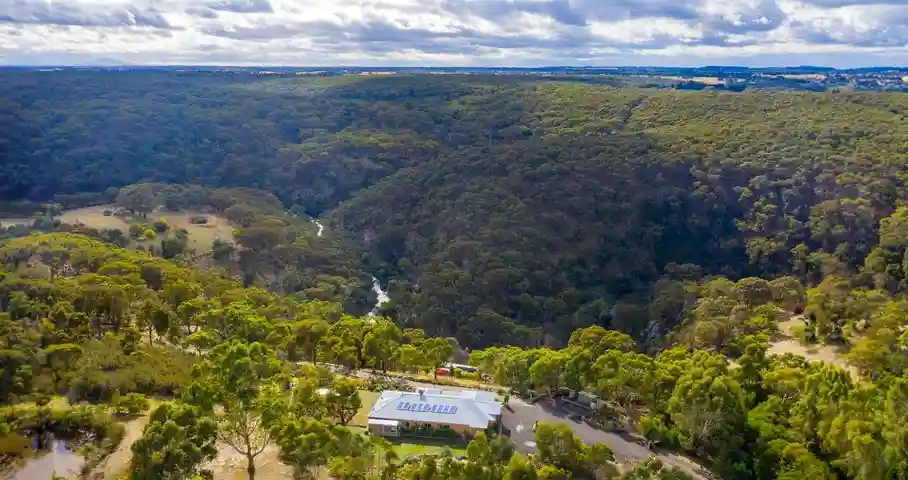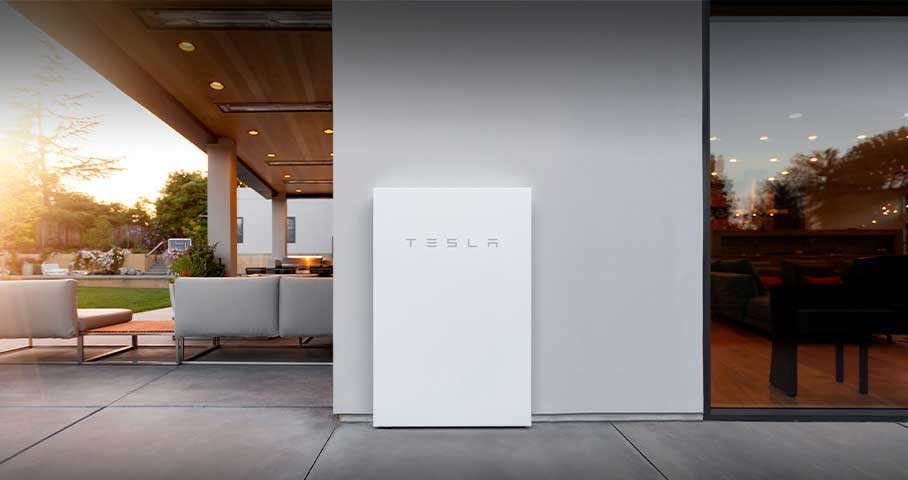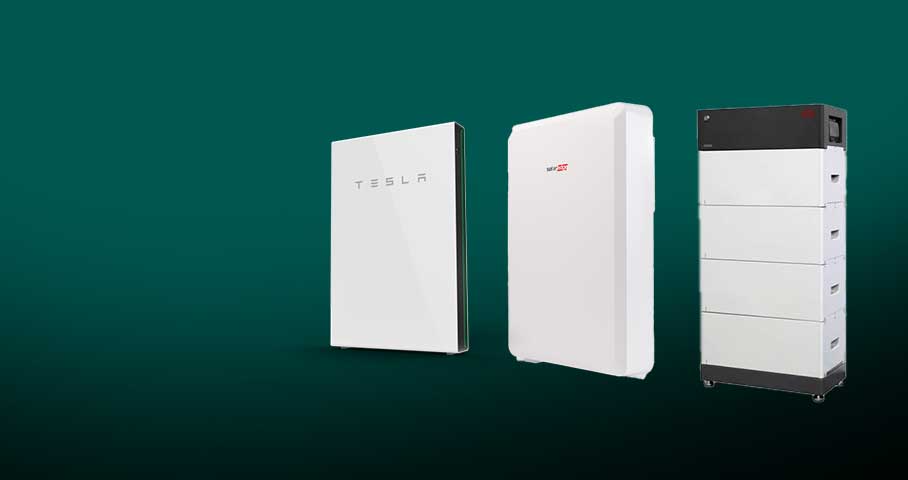The Tesla Powerwall Installation: Case Study

Find out why E-Smart Solar chose the Tesla Powerwall for their own home
Practical and stylish, the Tesla Powerwall makes a stunning addition to any home.
The Tesla Powerwall is taking the world by storm, argued to be the future of sustainable energy. And although Tesla is being compared to Apple in terms of creativity, innovation and design, it wasn’t enough for us to become a Tesla Certified Installer without experiencing it for ourselves, first.
What is the Tesla Powerwall?
The Tesla Powerwall is a home battery system that enables you to make use of your home solar panels 24 hours a day.
Your solar panels capture the sun’s rays and turn them into energy. And although solar is renewable energy, it has its limitations. One of these is that it can’t produce power during times of little or no light.
However the Tesla Powerwall changes all of that. It captures and stores the excess energy your solar panels produce during the day, enabling you to use that energy at night. It means you’re getting more value from your solar panels, as well as reducing your energy costs. It can also offer additional functionality by acting as an emergency backup during power outages.
How does the Tesla Powerwall work?
Wall-mounted, the Tesla Powerwall is a 7kW lithium-ion rechargeable battery. It runs on a daily cycle, which means that it’s designed to charge and then discharge each day. It also comes with a 10-year warranty.
Once installed, it can be used to store the electricity generated by your solar panels (also called photovoltaic or PV panels) during the day for use at night. The Powerwall can be installed as part of a new solar system, which comes with solar panels and an inverter. It can also be retrofitted to an existing solar system, but you may need to upgrade your inverter to a compatible model, depending on your current setup.
Why we chose the Tesla Powerwall
We’re a company that trades on reputation – we’re here to represent the industry and our clients.
We rigorously research every single product we offer to clients, and the Tesla Powerwall was no different. We attend product seminars, read through the promotional and marketing material, scour the pages of the technical booklets and talk for hours to reps. But the Tesla Powerwall intrigued us. It not only looks amazing, but is also lightweight, simple (for an accredited installer) to install, and incredibly safe. It seemed to be a renewable energy fan’s dream.
But we had to be sure.
For peace of mind, as well as knowledge and experience, we needed to install the Tesla Powerwall on our home before we installed it on a client’s.
Introducing the Tesla Powerwall to our Winmalee home
We live in Winmalee, close to Penrith in Sydney’s gorgeous Blue Mountains. Our home is a three-bedroom, one bathroom home with three-phase power.
The house has solar panels installed when we purchased it in 2009. We run 5.5kW of solar, with an additional 2kW to be connected when the 60-cent feed-in tariff finishes (31 December 2016). Because we’re in such a lush, leafy area, our direct sunlight is limited.
We run luxuries such as ducted air conditioning, and we also have a stand-alone double garage that has been converted into a business office. Because we work from home, we’re using far more electricity than the refrigerator, freezer and lights in a standard home. And with children (as well as working of a night), this doesn’t stop when the sun goes down.
Why we went with the Tesla Powerwall system
- Beyond wanting to trial the product before we installed it on a client’s home, there were a number of reasons why we chose the Tesla Powerwall.
- It’s absolutely stunning. While we agree that this shouldn’t be the main consideration choice when looking at a solar battery, you have to admit that it certainly is the best looking battery on the market. Tesla has designed it to be a part of the home; its as much visual as it is practicable. It makes a fantastic feature in an area where it can be seen. This gives you incredible flexibility when choosing a location to install it – you’re spoilt for choice.
- It’s rated for both indoor and outdoor use. The Tesla Powerwall is water resistant and has a dustproof enclosure/splash cover. Importantly, the environmental specifications support the flexibility you have with installation – with an operating temperature ranging from -20 degrees Celsius to 50 degrees Celcius, it can be mounted on a floor, an external wall, in a garage, or even inside the home.
- The battery experience is unparalleled. The Tesla Powerwall has up to a 10-year, unlimited cycle performance warranty for the battery. This is supported by all of the testing we’ve seen, where it outperforms its competitors by consistently operating at a higher efficiency and capacity.
- Architecturally, it’s flexible and scalable. Every home is different – different sizes, located in different climates, and with different energy consumption patterns and backup needs. The Tesla Powerwall offers flexibility with design – depending on your requirements we can tailor a battery option to suit. Whether you choose to mount them on the floor or the wall, up to nine Powerwall units can be stacked together to provide incredible energy storage solutions.
- It’s incredibly safe. With small children, safety is important to us. We loved that the Tesla Powerwall is touch-safe with no live wires or accessible vents for tiny fingers (or foreign objects!).
- It can be used independently of solar panels to load-shift. This means that you can take advantage of the cheaper off-peak electricity prices by charging the battery during off-peak times (at the lower cost) for use during peak periods.
- We’re absolutely intrigued by a company that wears its heart on its sleeve. Tesla fans and Apple fans have a lot on common. Not only do both companies produce a cult product that is as visual as it is practical, but they are also led by enigmatic leaders who are willing to pursue a greater vision. For Tesla and Elon Musk, this is very much about innovation and the sustainability. For an organisation to be so wholeheartedly invested in climate change and the fossil fuels that most scientists believe are contributing to the problem, and to be rising up against the biggest industry in the world in fossil fuels, we’re captivated.
Installing the Tesla Powerwall
We chose to install the Tesla Powerwall on a feature wall in the courtyard located at the front of our home. Adjacent to the front door and positioned alongside the deck, it’s a feature in itself (two spotlights enhance the design). Because we’re also qualified electricians, we were able to hide the electrical sand ensure the Tesla Powerwall is the stand-alone feature of the wall. We’ve seen a few installations where bulky wiring and backup electrical switchboards that aren’t effectively planned lose the beauty and simplicity of the Tesla Powerwall.
Weighing 97kg (but considerably more when packaged), we had a team of three working on the project. This included not only manoeuvring the battery around the property, but also lifting it to the correct height for mounting, positioning it on the wall, and ensuring it was stable.
Setting up the Tesla Powerwall
We decided to place the inverter and energy meter are on the other side of the house to maintain aesthetics. It’s important to note that the inverter and meter can no further than 10 meters away for communications.
If you’re thinking of investing on both a solar system and a Tesla Powerwall battery system, the majority of homes can be completed in a day. A retro-fitted installation of the Powerwall itself varies depending on the location and set-up, but it can also be completed in a day.
The benefit of being qualified electricians and accredited solar installers
The Tesla Powerwall has to be installed by a Certified Tesla Installer (such as E-Smart Solar!). However, the electricals need to be wired up by a qualified electrician. Although the system comes pre-wired to minimise install errors, there is still complex wiring required to enable communications between a single Powerwall and compatible inverter, as well as setting up metering.
This is where we can save you money – as we are both Authorised Tesla Resellers and qualified electricians able to undertake Level 2 Metering, we can do the entire job. No need for multiple trades and multiple invoices, just a seamless process from design through to installation.
Tesla Powerwall; the numbers
The energy generated: The Tesla Powerwall provides us with 6.4kW of energy, and is capable of discharging 3.3kW of continuous power to the home. It makes sense to charge the battery system during the day so that it can be used during the night, limiting our draw from the grid and, when the 60-cent feed-in tariff stops, minimising our export to the grid. With the feed-in tariff removed, we’re better off to use our own every than export to the grid.
The independence provided: While every household is different, including your room numbers and household profile, a 7kW battery generally wont be enough to take you ‘off the grid’ and make you entirely independent from the electricity grid, but the beauty of the Powerwall is that it’s possible to install more than one battery to increase your storage capacity.
The savings delivered: In terms of savings, we installed the Tesla Powerwall three weeks ago and are now in the process of tracking our electricity reduction. We’ll keep you updated in another instalment – stay tuned!
Installing the Tesla Powerwall; a success
The installation of the Tesla Powerwall was a success. This is hopefully the first of many to be installed in homes and small businesses across Penrith and the Blue Mountains.
The Tesla Powerwall means more than saving money. With the rising cost of energy an increasing concern for most families and business owners, and combined with the increasing disconnect between consumers and the energy giants, it provides us with that little bit more independence. Combined with the environmental benefits, we honestly believe that you can’t go wrong.
Over to you
Have you considered a solar battery system? We’d love to hear what you think about the Tesla Powerwall and your thoughts on solar batteries – let us know your thoughts!








